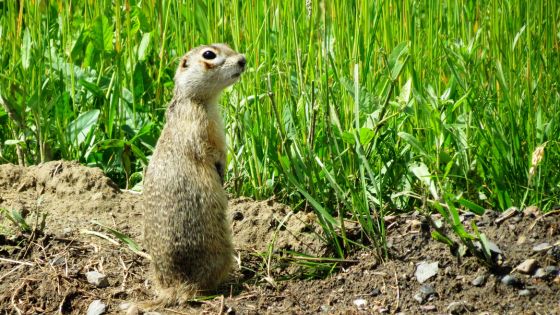Do you love gardening but can’t seem to keep your plants safe from pesky gophers? Have you tried numerous methods to keep them away but failed? Then, this guide is for you!

Gophers can be a real nuisance for gardeners as they not only damage your plants but also create a mess in your landscape. In this comprehensive guide, we will discuss various methods to outsmart these creatures and protect your precious plants.
Understanding Gophers
Gophers are small burrowing rodents that have a voracious appetite for plants. They dig tunnels in the ground and feed on roots, bulbs, and other plant parts. They are mostly active during the day and can cause significant damage to your landscape if not controlled.
There are different types of gophers, including pocket gophers, plains pocket gophers, and Botta’s pocket gophers. They vary in size, color, and behavior but all share the same destructive nature when it comes to gardens.
Signs of Gophers in Your Landscape
Before we dive into methods to protect your landscape from gophers, let’s look at some signs that indicate their presence:
- Mounds of soil: Gophers create mounds of soil as they dig tunnels underground. These mounds are usually crescent-shaped and around 12 inches in diameter.
- Tunnel systems: Gophers create an extensive network of tunnels underground to search for food. These tunnels are easily visible when the soil is soft or after heavy rain.
- Damaged plants: As gophers feed on roots and bulbs, they can cause plants to wilt, turn yellow, or die.
Now that you know how to identify gophers, let’s move on to the main topic of this guide – removing them from your landscape.
Proactive Measures to Protect Your Landscape
The best strategy to protect your landscape from gophers is prevention. Here are some proactive measures you can take:
- Fencing: Install a fence around your garden that reaches 2 feet below the ground and 2 feet above the ground. This prevents gophers from burrowing into your garden.
- Planting deterrents: Gophers dislike certain plants, such as daffodils, rosemary, and lavender. Consider planting them around your garden to deter gophers.
- Removing food sources: Gophers are attracted to certain plants, including alfalfa, clover, and sweet potatoes. Keep these plants away from your garden to discourage gopher activity.
Trapping Gophers
If you already have gophers in your landscape, trapping is an effective method to remove them. Here are the steps to follow:
- Identify active tunnels and dig holes on either side of the tunnel.
- Place a trap (snap traps or box traps) in one of the holes and cover it with soil.
- Check the trap regularly and release any captured gophers at least 100 yards away from your property.
These traps are humane and do not harm the gophers. However, it may take some time to catch all the gophers in your garden.
Professional Help
If you are facing a severe gopher infestation or have tried multiple methods without success, it is best to seek professional help. In Cottonwood Heights, many pest control companies offer gopher removal services.
While it may cost more than DIY methods, professional gopher removal ensures the complete eradication of these pests and prevents future infestations. This is a long-term solution and saves you time and effort in the long run.
Conclusion
Gophers can be a headache for gardeners, but with proper preventive measures and effective trapping techniques, you can outsmart them and protect your landscape. Remember, early detection and swift action are crucial in keeping gophers at bay. And if all else fails, don’t hesitate to seek professional help for a gopher-free garden! Happy gardening!
Do you have any additional tips or tricks for dealing with gophers? Share them in the comments section below! Let’s help each other outsmart those pesky creatures and enjoy our gardens to the fullest.
